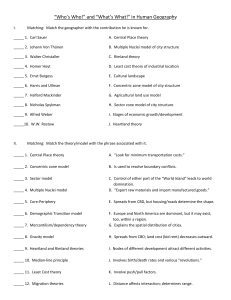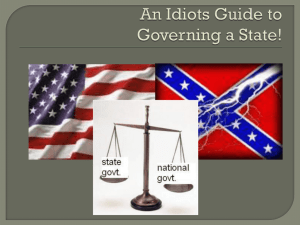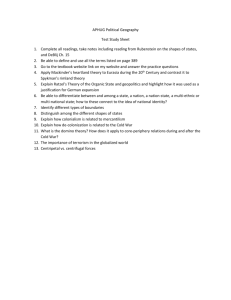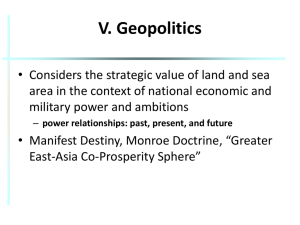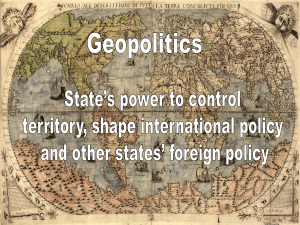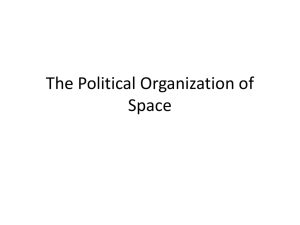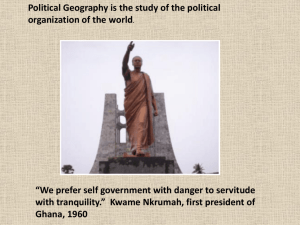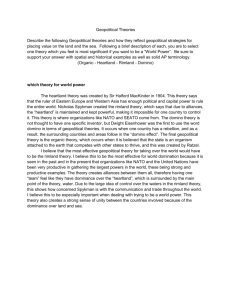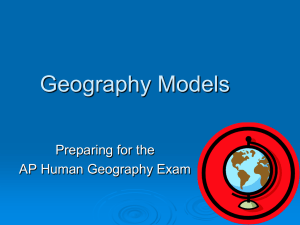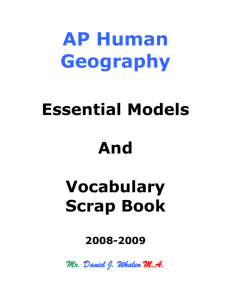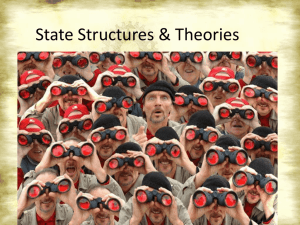International Political GeographyNEW
advertisement
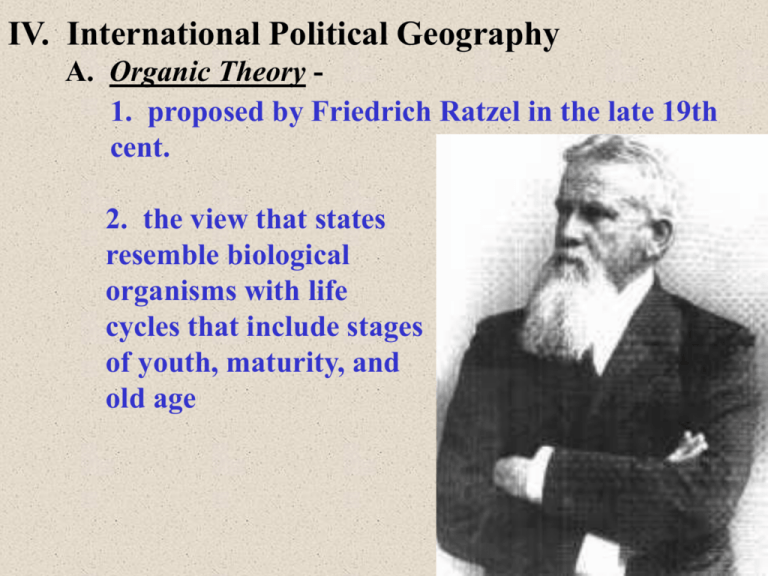
IV. International Political Geography A. Organic Theory 1. proposed by Friedrich Ratzel in the late 19th cent. 2. the view that states resemble biological organisms with life cycles that include stages of youth, maturity, and old age B. Geopolitics 1. developed by Swedish political scientist Rudolf Kjellen 2. nations must expand their land base to maintain power and standard of living 3. Don’t expand - disappear 4. Theory discarded by geographers after Adolf Hitler used it to justify his military aggression during World War II. C. Heartland/Rimland Theory 1. Heartland developed by Sir Halford Mackinder in the beginning of the 20th century a. He who rules the heartland rules the world states the great geographical "pivot" point in the center of a landmass will always be the key factor in making a nation globally dominant –Proposed that Russia would conquer the world b. Did not take into account the failure of Soviet economic system, the importance of the oceans or potential for countries to unite against the Soviets 2. Rimland Theory: Nicholas Spykman argued that the land around the heartland, was the most important for world political power. D. One of the most important trends in current global politics is the development of international alliances 1. International organization 2. supranational organization – political, economic, and/or cultural cooperation among national states to promote shared objectives with states often giving up some political power to a higher authority in pursuit of common objectives (political, economic, military, or environmental) a. United Nations (UN) - a global supranational organization established at the end of World War II to foster international security and cooperation c. European Union (EU) - comprised of Western European countries to promote free trade among members – 1. Changes resulting from supranationalism in Europe a) Larger market (greater trade, free trade, reduced tariffs) b) Greater international influence (greater ability to compete with the economies of other countries c) Open borders (tourists and labor) d) Common Currency – EU members have accepted the Euro as a common currency and a common economic focus – a common stable currency is the most important move to unify Europe e) Common policy (resources, agriculture, economic, environment, trade, military) and loss of control over individual policy d. Confederation 1. the Commonwealth of Independent States (CIS) is a confederacy made up of independent states from the former Soviet Union who have united because of their common economic and administrative needs. F. The Cold War and the East/West divide 1. from 1945-1989 the Cold divided east from west based on types of governments and economic 2. Domino theory 3. Iron Curtain 4. Cuba and Japan exceptions 5. After Soviet Union, power of states transferred to individuals – ie. Osama Bin Laden. G. North/South divide 1. Division between the wealthy countries and the generally poorer countries 2. The divide is mainly economic created by economic inequality created by a history of colonization and dominance.
